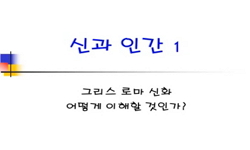This paper is written to provide a comparative analysis of Myths of national founding fathers in East Asian countries. First. I extract the narrative features common to both Jumong and Yuri myths. Then I investigate how these two are similar to and di...
http://chineseinput.net/에서 pinyin(병음)방식으로 중국어를 변환할 수 있습니다.
변환된 중국어를 복사하여 사용하시면 됩니다.
- 中文 을 입력하시려면 zhongwen을 입력하시고 space를누르시면됩니다.
- 北京 을 입력하시려면 beijing을 입력하시고 space를 누르시면 됩니다.
https://www.riss.kr/link?id=A75221361
- 저자
- 발행기관
- 학술지명
- 권호사항
-
발행연도
2005
-
작성언어
Korean
- 주제어
-
등재정보
KCI등재
-
자료형태
학술저널
-
수록면
5-51(47쪽)
- 제공처
-
0
상세조회 -
0
다운로드
부가정보
다국어 초록 (Multilingual Abstract)
This paper is written to provide a comparative analysis of Myths of national founding fathers in East Asian countries. First. I extract the narrative features common to both Jumong and Yuri myths. Then I investigate how these two are similar to and different from such myths from other East Asian countries. The myths I consider additionally in the present study include Vietnam's <Hongbangsi-Jeon>. Thailand's <Prarueng>, Japan's <Ohokuninushi>, and <Theseus> from Europe. Also studied are oral materials such as Korea's <Jesuk Bonpuri> and <Chogong Bonpuri> and Japan's <Omoimatzugane>. Since the myths of national founding fathers are of the hero type, I propose to analyze the myths using the six stages of the life cycle : birth, childhood, separation from their family, foundation of the nation, enthronement and achievement, and death and shrine. First, I find that Jumong and Yuri myths both are typical of the Sky father-Earth mother type and, at the same time, possess distinctive features that separate one from the other. This is because they exhibit different characteristics in each of the six stages. Next. I examine how the narrative features common to the two myths are compared with those of the myths from other neighboring countries. All of the six stages can be found in East Asian myths, except for the last 'death and shrine' stage. As such, Jumong and Yuri myths which are composed of the six stages are considered to models.
목차 (Table of Contents)
- I. 서론
- II. 주몽신화와 유리신화의 유형적 특징
- III. 주몽ㆍ유리신화형을 통해 본 동아시아 건국시조신화
- 1. 베트남 <홍방씨전>
- 2. 태국 <프라루엉>
- I. 서론
- II. 주몽신화와 유리신화의 유형적 특징
- III. 주몽ㆍ유리신화형을 통해 본 동아시아 건국시조신화
- 1. 베트남 <홍방씨전>
- 2. 태국 <프라루엉>
- 3. 일본 <오호쿠니누시> 신화
- IV. 동아시아 건국시조신화의 종합적 검토
- 1. 제신화의 전승상 특징
- 2. 주몽ㆍ유리신화형과 동아시아 건국시조신화 사이의 동이성 및 그 의미
- 3. 주몽ㆍ유리신화형의 전범성 모색
- V. 결론
- 참고문헌
- Abstract
동일학술지(권/호) 다른 논문
-
- 동아시아고대학회
- 이창식
- 2005
- KCI등재
-
Naxi족의 사후세계에 대한 고찰 -『神路圖』를 중심으로
- 동아시아고대학회
- 丁一
- 2005
- KCI등재
-
文獻에 나타난 動物의 울음소리에 대한 一考察 -重意的 用法의 擬聲語를 中心으로-
- 동아시아고대학회
- 黃圭三
- 2005
- KCI등재
-
韓日의 漢文讀法에 나타나는 符號의 形態에 대한 硏究 -初雕犬藏經 瑜伽師地論을 中心으로-
- 동아시아고대학회
- 尹幸舜
- 2005
- KCI등재





 KCI
KCI eArticle
eArticle


